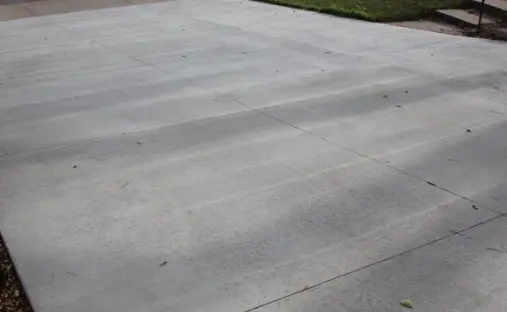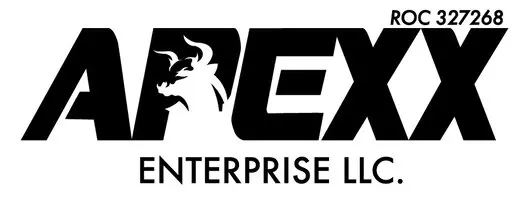Can You Turn Regular Concrete Into Stamped Concrete? A Complete Guide
Call us at (520) 301-0316

Stamped concrete is becoming a popular option for homeowners who want to improve the aesthetic appeal of their outdoor surfaces. Regular concrete, while durable and versatile, lacks the aesthetic appeal many people want for their driveways, walkways, and patios. This leads us to ask: Can regular concrete be turned into stamped concrete? This guide will take you through the benefits and considerations of transforming ordinary concrete into a stamped surface.
Can You Turn Regular Concrete Into Stamped Concrete?
Stamped concrete overlays can transform regular concrete into stamped concrete. Stampable concrete is applied over an existing surface to allow you to create patterns, textures, and designs. To ensure that the project is a success, it’s important to prepare, apply, and maintain the concrete properly.
Understanding Regular Concrete vs. Stamped
Regular Concrete is a mixture of cement, aggregates such as sand and gravel, and water. The strength, durability, and low price make it a popular choice for many construction projects. Regular concrete is functional but has a plain appearance. It usually has a gray, smooth surface. With proper care, it can last for many decades.
Stamped Concrete is a form of decorative art that elevates regular concrete to an artistic level. The patterns and colors applied during curing mimic the look of higher-end materials such as stone, bricks, slate, or wood. This not only improves the aesthetic appeal but also maintains the durability of standard concrete. It is a cheaper alternative to other more expensive materials but still has a similar aesthetic appeal.
What is a Stamped Concrete Overlay?
The stamped overlay can be used to rejuvenate plain or old concrete surfaces. The process involves stamping a thin layer with various designs on the concrete mix before it is fully set. The overlay is a “new skin” that covers the concrete. It can be customized to look like brick or stone. Special tools can be used to color and stamp the overlay in order to create the desired design.
The Process of Turning Regular Concrete Into Stamped Concrete
The process of transforming regular concrete into stamped cement is multi-step. To achieve professional results, it is important to prepare the surface properly and apply the product carefully.
Surface Preparation and Cleaning
The surface must first be cleaned thoroughly before applying the stamped overlay. This step is essential because dirt, grease, or debris may prevent the overlay from adhering to the concrete. How do you prepare the surface?
- Cleaning the Surface: Use an electric pressure washer to remove any dirt, oil, or old sealants. Concrete cleaner should be used to remove any stains.
- Repair Cracks: Use a concrete patching material to fill in visible cracks and holes. Allow these repairs to dry completely before continuing.
- Ensure smooth surfaces: Check for any rough spots that could affect the overlay. These areas should be smoothed or ground down.
Applying the Stamped Concrete Overlay
The next step is to apply a layer of overlay. The process involves:
1. Mix the Overlay: Prepare stamped concrete overlay according to the manufacturer’s instructions. To ensure durability, it’s essential to use a mix of high quality.
2. Apply a bonding agent: The overlay should adhere better to the concrete by using a bonding agent.
3. Pour and spread the overlay: After the adhesive has been applied, pour and spread the mix evenly with a trowel. The layer must be thin enough for stamping, but thick enough to cover the existing surface.
4. Stamp the desired pattern in the wet concrete with concrete stamps after the overlay is spread. The patterns can be anything from bricks and stones to geometric designs.
5. Curing and sealing: After the stamping has been completed, let the overlay cure for the time recommended. Once the overlay has dried, seal it to protect against weathering and wear.
Call us at (520) 301-0316

Benefits of Transforming Regular Concrete Into Stamped Concrete
Design Flexibility and Aesthetic Appeal
The design flexibility of stamped concrete is one of its main advantages. It can imitate high-end materials such as cobblestones, flagstones, slate, bricks, and even wood. Choose from a range of colors that match your outdoor aesthetic. Due to its versatility, homeowners can create unique designs for driveways, patios, pathways, and pool decks. It is a great choice for anyone looking to create a unique surface.
Cost-Effectiveness Compared to Natural Materials
It gives the appearance of expensive materials without the cost. It can offer a similar appearance for as little as $8 to $18 a square foot. A natural stone patio costs between $15 and 30 per square foot. Concrete is also more durable and requires less upkeep than wood, stone, or brick. This makes it even more cost-effective over time. All it takes is regular sweeping and sealing to keep your surface looking brand new.
Key Considerations for Resurfacing Regular Concrete
Durability and Maintenance
The durability of stamped concrete is well-known. It can also withstand weather changes and wear and tear. To maintain its beauty and avoid cracks, stamped concrete needs to be sealed periodically to prevent color loss. It is especially important to seal outdoor surfaces that are exposed to the weather. Maintenance, including sweeping up debris and resealing your stamped concrete every few years can prolong its life and keep it looking new for decades.
Common Mistakes to Avoid
Several mistakes can be made when converting ordinary concrete into stamped concrete.
- Using the wrong mix: Use a mix that is designed for overlays. Too much coarse aggregate can make stamping difficult.
- Inadequate surface preparation: Failure to clean or fix the surface properly may cause the overlay over time to peel or crack.
- Stamping too late: The timing is crucial. The overlay must still be pliable when stamping, otherwise the design won’t set properly.
These mistakes can lead to a failed transformation of concrete.
FAQ on Stamped Concrete Transformations
Can You Turn Old, Cracked Concrete Into Stamped Concrete?
If the old concrete is structurally sound, it can be resurfaced using a stamped overlay. Before applying the overlay, cracks and minor damage can easily be repaired. Resurfacing is not an option if the concrete is badly damaged or unstable.
Is Stamped Concrete Slippery When Wet?
When wet, stamped concrete can be slippery. This is especially true if the surface has been sealed. You can improve traction by adding anti-slip additives to your sealant. It is important to do this for surfaces like pool decks where water can cause the surface to be slippery. A textured pattern on the stamp can help to reduce slipperiness.
Conclusion
The transformation of regular concrete to stamped concrete is a visually pleasing and cost-effective way to enhance your outdoor areas. Concrete surfaces can be transformed into luxurious materials for a fraction of the price with the right surface preparation, application of a stamp overlay, and regular maintenance. Contact Apexx Enterprise LLC for more information about their stamped concrete service. Start creating the outdoor area of your dreams now!
